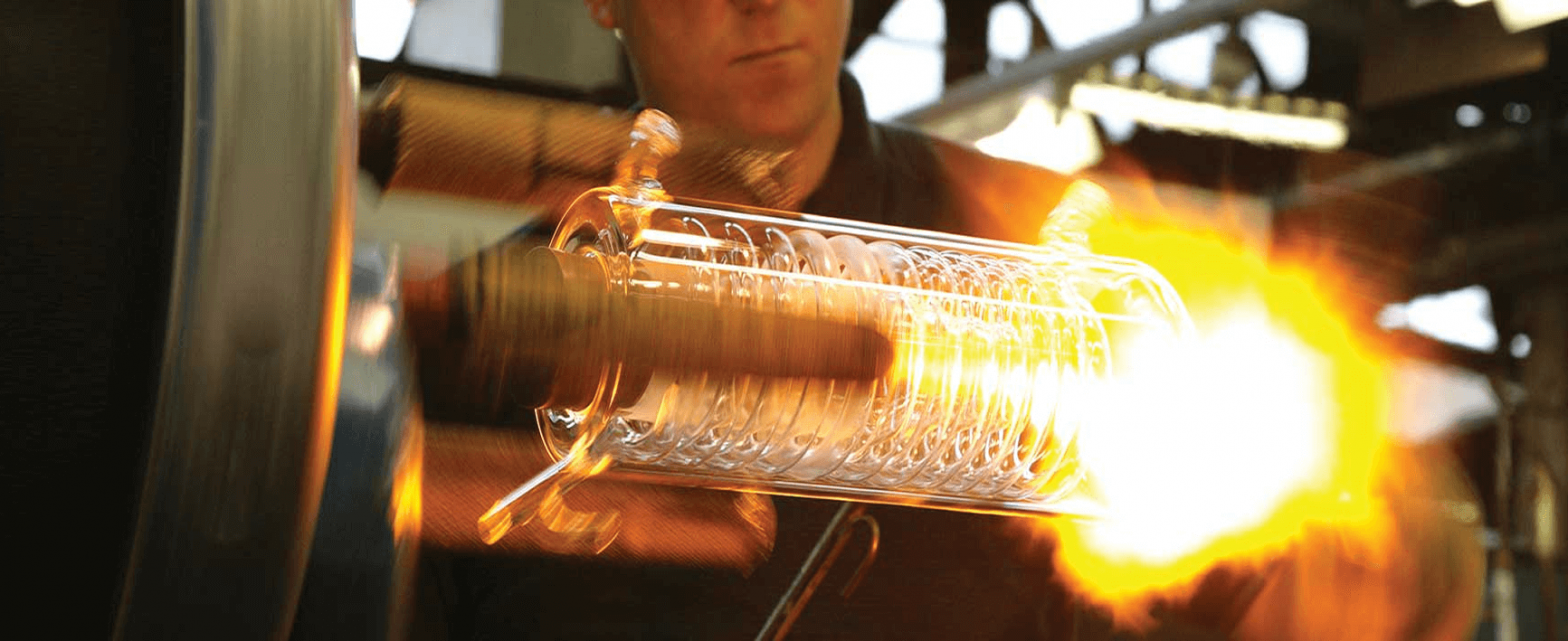Glass and in particular glass manufacturing is an age-old process. Who, how or when glass was discovered is still a mystery to this day, but one thing is for sure, it’s a material that has come to play a vital role in our day-to-day lives both for domestic and industrial purposes.
The term “glass fabrication” encompasses all the processes used to work or treat raw glass material to turn it into a functional component or product. Examples include cutting, grinding, drilling, polishing, tempering, finishing, and edging.
While some fabrication variations exist in creating different types of glass, the following outlines the basic process used by Borosilicate glass manufacturers to create the more common types of glass, such as soda-lime.
Table of Contents
Glass Fabrication
The main component of glass, called the former, must be heated to a very high temperature to become viscous. The most common former is silicon dioxide, which is found in sand. This is mixed with a flux like soda ash or potash, which helps it to melt at a lower temperature.
A stabilizer like calcium oxide is also used to keep the glass from dissolving or forming unwanted crystal impurities. These dry ingredients are mixed together in a batch. A furnace melts the batch to form a liquid compound. Cullet, which is made up of broken glass, is added to the batch to help it melt.
After it is melted, the viscous glass is then poured into a bath of molten tin and formed into a ribbon and cooled. The slow and even cooling process is called annealing. Glass must be cooled evenly because if one area stays hotter longer it becomes thicker and the different levels of thickness results in stress on the piece of glass.
An improperly-annealed piece of glass is more likely to be the downfall of your glass fabrication process!
Glass Fabrication : Cutting
Once the cooling process is through, it’s time to cut down the cooled annealed glass to the desired dimensions. This is usually done with Computer Numerical Control machines, or CNC machines, which are capable of extremely precise operations.
CNC machines operate according to specific CAM and CAD software programs, which enable them to machine any number of workpieces with identical precision. After the glass is cut and shaped, glass fabrication usually requires some glass polishing, laminating, or other finishing services.
Glass Fabrication : Tempering
Tempering is a heat treatment that strengthens glass to about four times the strength of non-tempered glass. The process begins with cut and washed glass travelling through a tempering oven, either in a batch or a continuous feed. The glass is heated to more than 600o Celsius before it goes through quenching, the cooling process. During quenching, high-pressure air blasts the glass from nozzles in many positions.
The outer surface of the glass cools much more quickly than the centre, which leads to the centre of the glass trying to pull back from the outer surface. The outcome is that the centre remains in tension, and the outside goes into compression, giving tempered glass its strength.
Alternatively, some people also use a chemical process for tempering during the glass fabrication process. The glass is submerged in a molten potassium salt bath that causes the sodium ions in the glass to be replaced with larger potassium ions. The larger potassium ions fill the gaps left by the sodium ions, which creates a state of compression in the outer surface of the glass.
Glass fabrication : Laminating
Laminating is another way to create a safety glass during glass fabrication.
It involves strengthening the glass with a plastic material interlayer. Two or more pieces of glass are bonded, using heat and pressure, between one or more layers of adhesives, usually polyvinyl butyral (PVB) or ethylene-vinyl acetate (EVA).
Another method is to bond two or more pieces of glass with an aliphatic urethane or EVA interlayer, using heat and pressure.
Glass can also be interlaid with a cured resin or with EVA. At Swastik Enterprises, we are veterans in glass fabrication and specifically in being industry leaders in Borosilicate Glass Manufacturing. With state-of-the-art manufacturing equipment and a broad selection of glass materials, our team has the knowledge, skills, and tools necessary to accommodate nearly any glass part needed.
Our extensive glass fabrication capabilities ensure we can complete all steps of any customer project under one roof.
